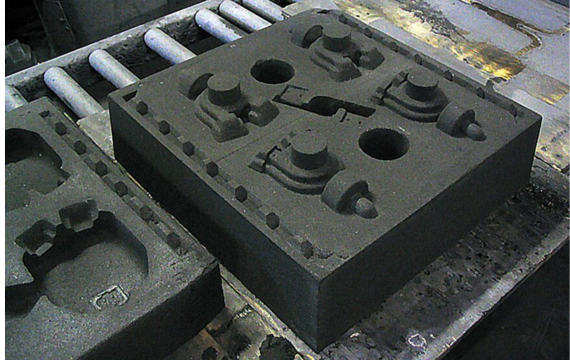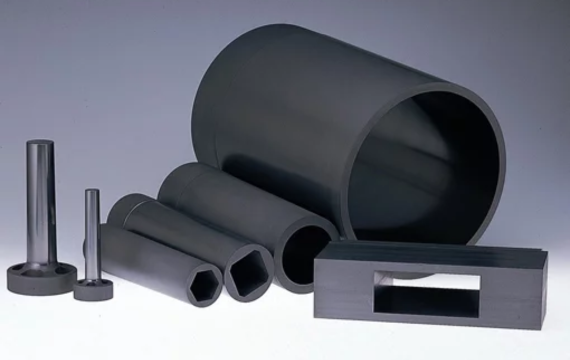Casting Process Definition
Casting process is a big industry that have huge impact in modern society. In this article we’ll explore techniques, applications, and advancements that make casting crucial in different industries. This guide is a way to open your mind in understanding molding, pouring, and shaping molten metal and will uncover the secrets of this essential manufacturing method. So, keep reading!
What is Casting?
Melting metal into a precisely shaped mold is the key industrial process known as casting, which turns solid materials into complex structures.
The science and art of casting are fundamentally combined, allowing the mystery of solid material melting to be revealed. This technique makes it possible to create intricate and sophisticated structures, which greatly benefits a variety of sectors.
Casting is an essential technique for creating anything from industrial components to artistic masterpieces, as the molten metal takes on a precise and versatile form within the mold during the manufacturing process.

Materials Used in Casting
To satisfy certain manufacturing needs, a range of materials are used in casting process.
The foundation of casting materials are metals and alloys, which cone in a variety of forms and offer a range of mechanical qualities, from steel to precious metals like gold. While composites, binder materials, refractory compounds, and waxes are essential for mold creation and attaining desirable casting qualities, non-ferrous metals, ceramics, plastics, and polymers offer more alternatives for particular applications.
This wide variety of materials demonstrates how casting may be tailored to a wide range of industries and production requirements.
Steps in Casting Process
1. Pattern Making
This is the first process in which a copy of the desired part, or pattern, is made. This acts as a mold template and can be constructed from a variety of materials, including plastic, metal, and wood.
2. Mold Preparation
A mold, or negative impression of the intended object, is made using the pattern during the mold preparation process. To create mold cavity, this entails packing a substance around the pattern, such as sand or a refractory combination.
3. Melting
Melting points of metal in a furnace is the next process. To get the material to the appropriate molten condition and enable proper flow and mold filling, the temperature must be carefully regulated.
4. Pouring
The metal is placed into the ready mold after it has melted. To guarantee that the mold cavity is completely filled and to prevent flaws in the finished casting, precision is needed during the pouring process.
5. Cooling
The process of cooling is when the molten metal inside the mold solidifies. Strength and hardiness of the finished casting’s material are determined in large part by the rate of cooling.
6. Shakeout
The casting is removed by breaking or shaking the mold once the metal has set. Shakeout is the process of removing the freshly formed metal component from the mold’s leftover, which could include sand or ceramic shell.
7. Finishing
Finishing is the last step, during which the casting goes through any procedures required to obtain the required dimensional accuracy and surface quality. This could involve various methods like polishing, grinding, or machining, based on the final product’s requirements.
What are the different types of Casting Process?

A mold is created using a sand casting and bonding agent mixture in the metal casting technique. To create a solid metal object, molten metal is poured into the mold.
Examples:
- Engine blocks
- Artistic Metal Sculpture

A ceramic shell is coated with a wax pattern, which is then melted away and replaced with molten metal in the precision casting technique.
Example:
- Aerospace components
- Jewelry

A type of metal casting in which molten metal is injected into a reusable mold, or
gravity die casting process, to create intricate, precisely engineered pieces.
Example:
- Engine Parts
- Electronic device housings

Melted metal is poured into a revolving mold during the centrifugal process, which uses centrifugal force to create symmetrical or cylindrical pieces.
Example:
- Pipes
- Cylinder

In lost foam casting, molten metal is poured into a mold made from a foam pattern, and the foam is replaced during the vacuum casting process.
Example:
- Automotive Engine Blocks
- Complex Industrial Components

Melted metal is continually poured into a mold during the continuous casting process to create uninterrupted, lengthy, homogeneous shapes.
Example:
- Steel Billets
- Slabs in the steel industry

A resin-coated sand shell is used in the shell casting, often referred to as shell molding, casting process to make molds for metal casting.
Example:
- Engine components
- Intricate metal parts
Advantages and Disadvantages of Casting Processes
- ADVANTAGES
- DISADVANTAGES
There are many benefits to using the casting process in production.
It is a desirable alternative for creating intricate components because of its cost-effectiveness and capacity to handle complex shapes. The broad range of materials that casting can handle demonstrates its adaptability and opens up a variety of applications across sectors.
Time and money savings are enhanced by the near-net shape or net shape production characteristics, which lessens the need for substantial machining.
Design flexibility offered by casting makes it possible to incorporate complex elements without the need for extra assembly.
Its attractiveness is further increased by high production rates, a wide range of sizes, and minimal material waste.
Furthermore, casting enables exact metallurgical control, guaranteeing the intended mechanical qualities in the finished product.
Casting tooling is a durable and dependable manufacturing process due to its resistance to waste.
Although useful, the casting technique has several disadvantages.
More machining can be required to overcome difficulties like reaching precise tolerances and desired surface qualities. With very large or heavy castings, size limitation might cause problems and necessitate the use of specialist equipment.
Small manufacturing runs may not be feasible due to high initial tooling costs. The quality and sustainability of the process can be impacted by problems such as porosity, restricted material possibilities, and environmental issues associated with the disposal of sand.
Production efficiency can be impacted by extended cooling periods, dimensional variability, and poor precision in particular processes. Successful execution requires skill and knowledge, and working with molten metal and extreme temperatures in foundries raises safety risks.
Quality Control in Casting
One of the most important aspects of quality control in casting is ensuring the production of components free from defects through inspection and testing procedures. Thorough testing and inspection processes aid in locating common flaws like porosity or inclusions, enabling rapid corrections to preserve the castings’ integrity.
More proof of the casting industry’s dedication to manufacturing products that meet specifications is found in its tight commitment to quality standards.
This thorough approach to quality control is necessary to produce casting results that are dependable and consistent across a range of applications.
Conclusion
In today’s society, casting plays a vital role in determining how thing’s are manufactured. It’s the skill of shaping melted metal into exact shapes, which is used to make everything from sculptures to automobile parts. Casting is a favored production procedure because of its adaptability and capacity to handle intricate patterns. The method produces components with less waste while saving time and money. Casting is an important method that is both efficient and useful in today’s different industries, ranging from construction to aerospace. Request the casting process PDF for more information. Choose KDMFab as your one-stop manufacturer.




